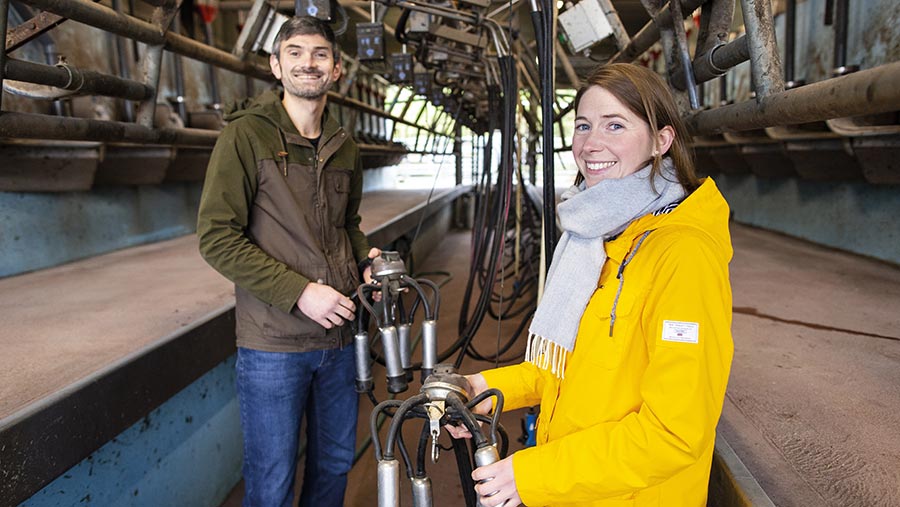Farmer Focus: Is it time to stop sowing monoculture grasses?
 Gillian and Neil O'Sullivan © Cathal Noonan
Gillian and Neil O'Sullivan © Cathal Noonan The final grazing rotation kicks off in early October and lasts about eight weeks.
As paddocks are grazed throughout the month, they are closed up for winter. We target having 70% of the farm closed by Halloween.
We set this area grazed slightly higher than recommended, but it has been increased for a number of reasons.
The paddocks closed in October are the first grazed in spring and with recent growth rates of 30-45kg dry matter (DM)/ha, this is our February grass.
As 83% of the herd will be calving in February, the availability of high-quality grass will be invaluable.
Given that we have a dry farm that allows us to graze throughout February, we have to make the best use of that natural advantage, so setting things up now to use that is key.
See also: Advice on closing paddocks for winter
Given the success of the mini-trial with multispecies swards on the steeper part of the farm, we have already selected another south-facing paddock to reseed in spring.
This field was allowed to build cover, and bales were dotted over the pasture to facilitate bale grazing in November.
The plan is that as the cows graze a section a day, organic matter will be added to the scant topsoil on the slopes.
Given that 50% of nitrogen comes from the soil organic matter pool, it serves us well to consider this when farming on shallow soils.
A downpour of 20mm of rain on 24 October also resulted in a different kind of reseeding for a paddock that was poached in parts by the cows.
In a month where the weather allowed fantastic residuals, it is frustrating to get caught by a few hours of heavy rain.
As reseeds go, over the year the performance of the grass-clover swards has been superb.
The best and longest-established grass-clover sward on the farm has grown 13.7t DM/ha, having received 120kg of nitrogen/ha up to the end of this month.
When we review the grass performance each year, the monoculture swards of perennial ryegrass are continually coming into question.
They are bred to be nitrogen-hungry; we often struggle with summer grass quality and they are shallow-rooting, so lack resilience over dry spells.
Yes, they have a place on the farm, but maybe more so as a team member instead of as a soloist.

